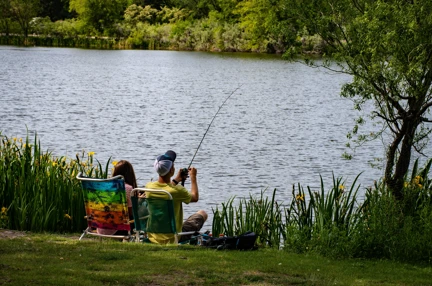Using tech to navigate the streets
These days, most smartphones have built-in apps to help you plan routes, and give you real-time information about your current location.
You can even do some of this with simple spoken commands using your phone's voice assistant.
Here, we share the apps most used by our veterans.

Built-in apps for navigation
Accessing help with navigation via the map app on your phone is pretty straightforward. These are the simple steps you need to take:
Android: Google Maps
To get your phone to direct you somewhere, simply activate the voice assistant with "Hey Google" or "Okay Google".
Command the app by saying, for example, "Direct me to Aylesbury library on foot," then follow the spoken instructions for turn-by-turn guidance.
You can also check handy facts before you set off, for example, "Is Aylesbury library open today?" to make sure you don't have a wasted trip.
iPhone: Apple Maps
Simply wake up Siri by saying, "Hey Siri" or by holding down the side or home button.
Say a command, for example, "Direct me to Boots in Chichester on foot," and Siri will give you step-by-step spoken instructions.
Specialised apps for sight loss
There are a few navigation apps which have been created especially for people with low vision, or no vision at all. For example, Lazarillo can give you information about nearby places, plus navigation help where it tells you what’s around you, such as what shops you’re walking past or where the nearest train station is.
Staying safe on the streets
While technology can be a help when you’re navigating the streets, it's crucial to remember the following:
Apps are helpful for giving you a general idea of where you are and what's around you (what we might call 'orientation'), but are never a replacement for vital mobility aids, such as a cane or a guide dog, and the skills you need to navigate your environment safely.
Although the maps you get on phones are very good these days, there's still a chance they might get things wrong now and again and may not necessarily know about obstacles like a closed pathway or blocked pavement. Use the app like you would a map - a useful reference but only a guide.
Many apps now give you spoken instructions which is great, but be careful about using headphones with them. Make sure you stay aware of the sounds around you. Try headphones that allow you to hear what’s around you as well as your phone, for example, by having a ‘transparency mode’ or using bone-conduction technology.
GPS apps tend to run down your phone battery quite quickly, so it’s wise to make sure your phone is fully charged when you set off. You might also want to carry a back-up battery or charger with you if needed.
For more navigation app ideas, visit the RNIB website.
Read more
Hobbies with low vision: fishing
16 Jan 2024
Fishing is the UK's most popular participation sport - and there’s no need to give it up when you lose your sight.

Watching TV with a vision impairment
5 Jan 2024
Many of us rely on our televisions for entertainment – and having sight loss doesn’t need to mean missing out.

Welfare benefits for people with sight loss
23 Jan 2024
You may be entitled to financial and other support to help you address issues caused by your disability.

Sign up for email updates
We would love to keep you updated about our activities, services and ways to support us.
You can change your contact preferences at any time by calling us on 0300 111 2233 or emailing us. See our privacy policy for more details.